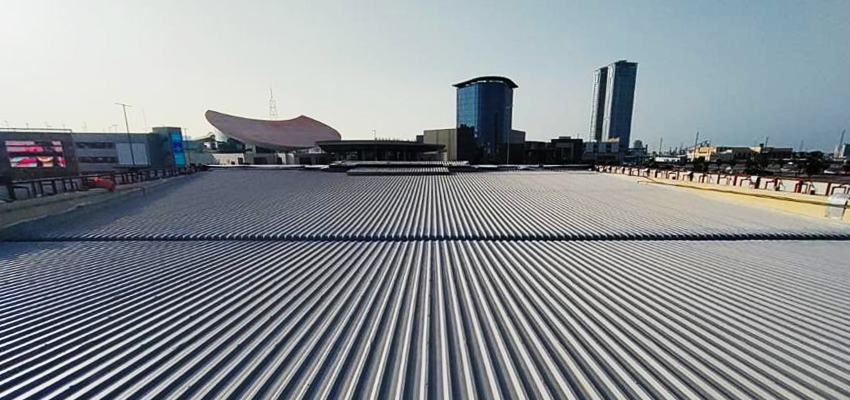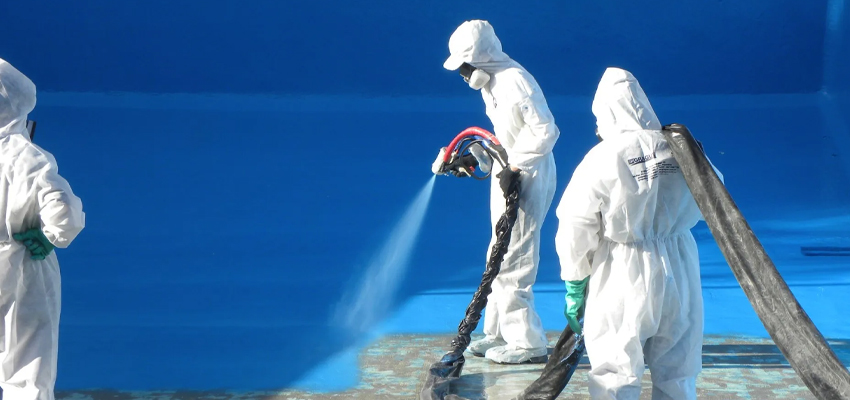
Thermal insulation plays a vital role in protecting waterproofing in UAE by minimizing heat transfer, preventing thermal shock, controlling condensation, and improving energy efficiency. Investing in high-quality insulation can help ensure the long-term durability and effectiveness of waterproofing systems in hot climates. In the scorching heat of the UAE where temperatures can easily soar above 40°C (104°F) for a significant portion of the year, the importance of thermal insulation cannot be overstated. Beyond just providing comfort, thermal insulation plays a critical role in maintaining the structural integrity, energy efficiency, and longevity of buildings, particularly in a region known for its extreme climate conditions.
Here is some information on the importance of thermal insulation services in the UAE:
Climate Challenges:- The UAE experiences a desert climate characterized by extremely high temperatures during the day and relatively cooler temperatures at night.
- Without adequate thermal insulation, buildings are susceptible to rapid heat gain during the day, leading to increased energy consumption for cooling purposes.
- With the rising costs of energy and growing environmental concerns, energy efficiency has become a priority in the UAE's construction sector.
- Thermal insulation helps reduce the need for excessive air conditioning, resulting in significant energy savings over the lifespan of a building.
- By minimizing heat transfer through walls, roofs, and windows, insulation ensures that indoor spaces remain cooler for longer periods, even in the face of relentless outdoor heat.
- Extreme temperature variations can cause expansion and contraction of building materials, leading to cracks, leaks, and structural damage.
- Thermal insulation acts as a barrier, shielding building components such as waterproofing membranes, concrete, and metal structures from thermal stress.
- By mitigating thermal fluctuations, insulation helps preserve the integrity of construction materials, thereby extending the lifespan of buildings in the UAE.
- Effective thermal insulation contributes to a more comfortable indoor environment by maintaining stable temperatures throughout the day.
- By reducing heat infiltration and preventing cold spots, insulation helps create uniform heating and cooling conditions, enhancing occupant comfort.
- Moreover, insulation can also play a role in controlling humidity levels, thereby improving indoor air quality and reducing the risk of mold and moisture-related issues.
- In line with global sustainability trends, the UAE has been increasingly emphasizing green building practices and certifications.
- Thermal insulation supports sustainable construction by reducing greenhouse gas emissions associated with energy consumption.
- Additionally, by minimizing the need for mechanical heating and cooling systems, insulation contributes to a lower carbon footprint and overall environmental impact.
Thermal insulation plays a crucial role in protecting waterproofing in UAE, as well as in any other region with hot climates. Here's how:
- Reduced Heat Transfer: In the UAE, temperatures can soar, especially during the summer months. Without proper insulation, the heat from the sun can penetrate through the roof, heating up the underlying waterproofing materials. This can cause the materials to expand and contract, leading to cracks and deterioration over time. Thermal insulation helps reduce the transfer of heat, keeping the underlying waterproofing materials at a more stable temperature and extending their lifespan.
- Prevention of Thermal Shock:Thermal shock occurs when there are rapid temperature changes, which can occur frequently in desert climates like the UAE. Insulation helps to moderate these temperature changes by providing a barrier between the hot exterior and the cooler interior. By minimizing thermal shock, insulation helps to prevent damage to the waterproofing membrane.
- Condensation Control: In addition to external heat, insulation also helps control internal temperature fluctuations. In the UAE, where buildings often rely heavily on air conditioning to maintain comfortable indoor temperatures, condensation can form on the underside of the roof if it's not properly insulated. This moisture can compromise the integrity of the waterproofing materials over time. Insulation acts as a barrier, reducing the likelihood of condensation forming and protecting the waterproofing.
Implementing thermal insulation in the UAE involves several key procedures to ensure effectiveness, compliance with regulations, and durability in the challenging climate. Here's a detailed overview of the typical procedures involved:
Assessment and Design:- Conduct a thorough assessment of the building's thermal performance requirements, taking into account factors such as location, orientation, building materials, and intended use.
- Engage with architects, engineers, and insulation specialists to develop a comprehensive insulation strategy tailored to the specific needs and challenges of the project.
- Utilize building energy simulation software to model heat transfer dynamics and optimize insulation specifications for maximum efficiency.
- Choose insulation materials suitable for the UAE's climate, considering factors such as thermal conductivity, moisture resistance, fire safety, and environmental sustainability.
- Common insulation materials used in the UAE include reflective insulation, foam insulation (e.g., closed-cell foam), fiberglass insulation, and aerogel insulation.
- Ensure that selected materials comply with relevant local building codes and standards, such as the UAE Fire and Life Safety Code and the Abu Dhabi International Building Code.
- Develop a detailed installation plan outlining the scope of work, insulation placement, fastening methods, and integration with other building components (e.g., roofing, walls, HVAC systems).
- Coordinate with construction teams to schedule insulation installation at the appropriate stages of the building process, ensuring seamless integration with other trades and minimizing disruptions.
- Prepare the surfaces to be insulated by cleaning, leveling, and priming as necessary to ensure proper adhesion and durability of insulation materials.
- Apply surface treatments or coatings, such as reflective paints or coatings with UV-resistant properties, to enhance the performance and longevity of the insulation system.
- Install insulation materials according to manufacturer guidelines and industry best practices, ensuring proper coverage, alignment, and sealing of joints and seams.
- Employ appropriate techniques for different types of insulation, such as rolling out reflective insulation, spraying foam insulation, or installing batts and blankets.
- Pay special attention to critical areas prone to thermal bridging, such as corners, penetrations, and connections between building elements.
- Implement quality assurance measures throughout the installation process, including inspections, testing, and documentation of workmanship and material performance.
- Conduct thermal imaging or other diagnostic tests to identify potential insulation defects, air leaks, or thermal anomalies that could compromise the effectiveness of the insulation system.
- Maintain detailed records of insulation specifications, installation procedures, testing results, and compliance documentation for regulatory purposes.
- Ensure that insulation installations comply with relevant building codes, standards, and sustainability certifications, such as Estidama in Abu Dhabi or Dubai Green Building Regulations.
- Establish a monitoring and maintenance plan to regularly inspect and maintain insulation systems, addressing issues such as damage, degradation, or pest infestation promptly.
- Educate building occupants and maintenance staff on the importance of proper insulation care and maintenance practices to maximize long-term performance and energy savings.
By following these procedures diligently, stakeholders can ensure the successful implementation of thermal insulation solutions that enhance energy efficiency, sustainability, and occupant comfort in buildings across the UAE's diverse built environment.
In the challenging climate, thermal insulation in UAE serves as a cornerstone of sustainable building design, energy efficiency, and occupant comfort. By prioritizing effective insulation solutions, developers, architects, and building owners can create structures that withstand the rigors of extreme heat while minimizing environmental impact and operating costs. As the UAE continues to embrace sustainability and innovation in the construction sector, the importance of thermal insulation will only grow, driving advancements in building materials and techniques to meet the demands of the future.
Read our latest blog How Waterproofing Contractors in Dubai Utilize Polyurea Spray Coating Services?





